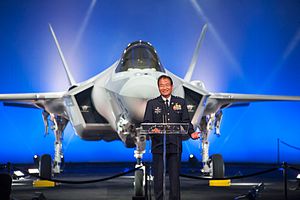It has been two weeks since the April 9 crash of a Japan Air Self-Defense Force (JASDF) fifth-generation Lockheed Martin Lightning II F-35A fighter jet off northern Japan with the U.S. and Japan scrambling to recover the aircraft before Russia or China get to there first.
According to a senior U.S. Navy official, search efforts are closing in on the aircraft’s fuselage. “We have a pretty good idea where it is,” the official was quoted as saying by CNN on April 24. The senior U.S. service member added that the search area was looking at depths of around 450 meters (1,500 feet).
The U.S. Defense Department has reportedly chartered a privately-owned deep-sea search vessel, Singaporean-operated Van Gogh, to help with the search. It will join the Japan Agency for Marine-Earth Science and Technology research vessel Kaimei. The ship is equipped with a remote operating vehicle (ROV) that can dive to depths up to 3,000 meters.
The crashed aircraft was one of four F-35A fighter jets that took off from Misawa Air Base for an air combat training mission at 6:59 p.m., Japan time, on April 9. The F-35A disappeared from radar tracking systems at 7:27 p.m. April 9 about 135 km (84 miles) east of Misawa Air Base, in the northern part of Japan’s main island of Honshu.
While a section of the missing F-35A’s tail has been found on the surface, the pilot and the aircraft’s fuselage have not been located. The cause of the crash remains unknown.
While there has been some media speculation that Russia or China will first get to the crash site and recover the ultra-sensitive military technology U.S. and Japanese officials reject that possibility. “No, I’m not,” acting Defense Secretary Patrick Shanahan said last Friday when asked whether he is concerned that China could reach the crash site first, according to the Air Force Times.
“We don’t have such possibility, absolutely no,” Japanese Defense Minister Takeshi Iwaya said last week during a visit to the Pentagon in Washington DC for bilateral talks. “We are conducting surveillance and warning activities so we can identify and find the missing aircraft.”
According to the Pentagon, the primary U.S. search effort ended last week, which over the past 14 days included U.S. Navy Boeing P-8A Poseidon maritime patrol aircraft, Arleigh Burke-class and guided missile destroyer, next to others. Japan dispatched U-125A jets, UH-60J Black Hawk helicopters, P-3C maritime surveillance plane, and Japan Coast Guard vessels for the search.
The JASDF entire fleet of F-35As will remain grounded for the time being.































